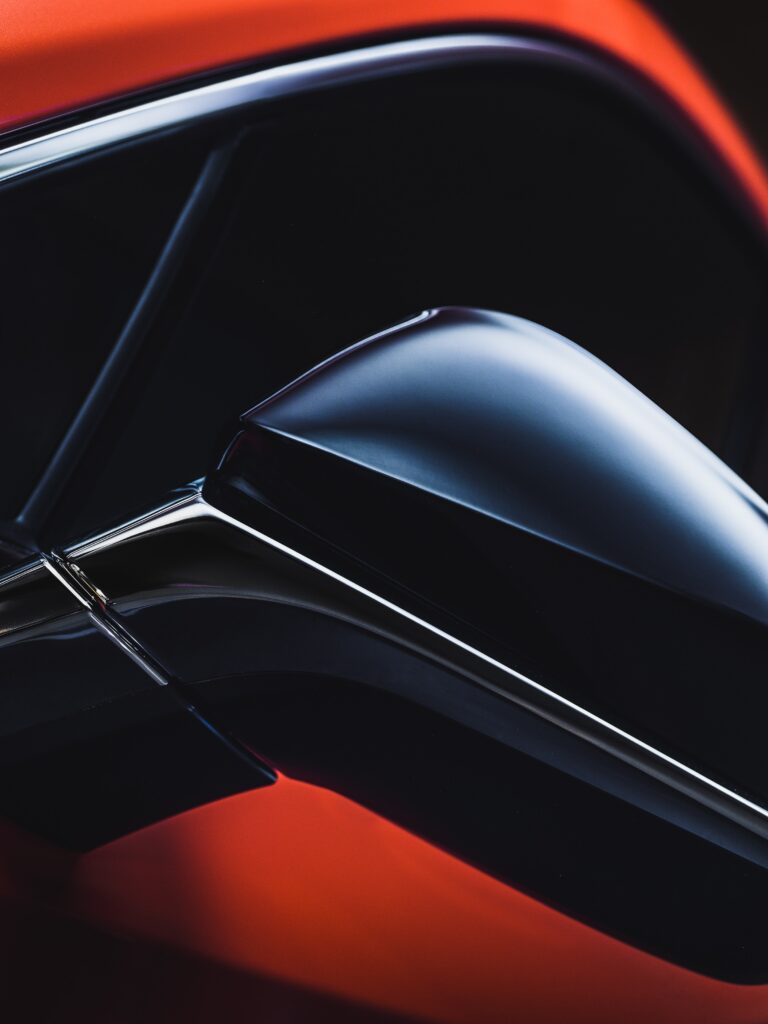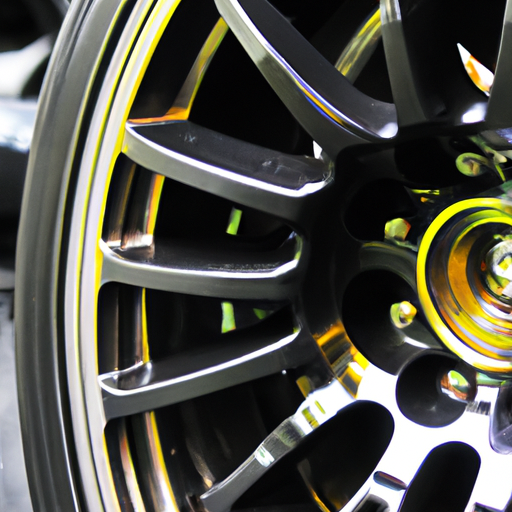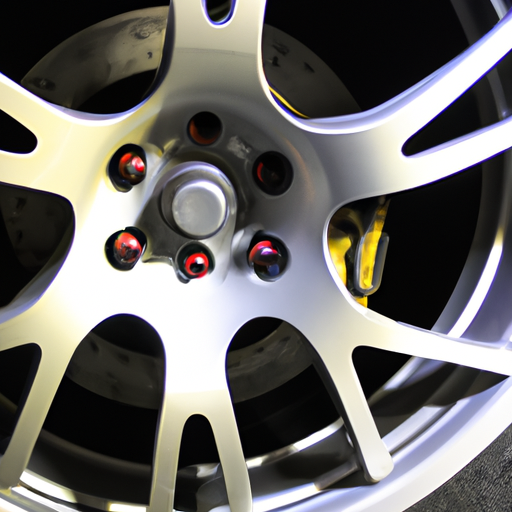If you’re in the market for aftermarket car wheels, it’s essential to prioritize safety without compromising on style. With an array of options available, it can be overwhelming to know where to begin. From understanding load rating to ensuring proper fitment, this article will guide you through the key safety considerations when selecting aftermarket car wheels. So whether you’re a car enthusiast looking to enhance your vehicle’s performance or simply wanting to upgrade its appearance, read on to make an informed decision that keeps you safe on the road.

1. Basic Terminology and Definitions
1.1. Aftermarket car wheels
Aftermarket car wheels refer to wheels that are not made by the original equipment manufacturer (OEM) of the vehicle. These wheels are typically purchased separately and installed on a vehicle as a replacement or upgrade to the factory wheels.
1.2. Safety considerations
When it comes to selecting aftermarket car wheels, safety should be a top priority. The right wheels can enhance the overall performance and handling of a vehicle, but choosing the wrong ones can have serious consequences. It is essential to understand and consider various safety factors before making a decision on which aftermarket wheels to purchase.
2. Understanding the Importance of Safety
2.1. Impact on vehicle performance
Aftermarket wheels can significantly impact the overall performance of a vehicle. The weight, design, and construction of the wheels can affect acceleration, handling, and fuel efficiency. It is crucial to select wheels that are suitable for your specific vehicle and intended use to ensure optimal performance and safety on the road.
2.2. Influence on braking system
The size, weight, and material of the aftermarket wheels can have a direct impact on the effectiveness of the braking system. Inadequate wheel fitment or exceeding weight limits can put additional stress on the brakes, potentially compromising their performance and increasing stopping distances. It is vital to choose wheels that are compatible with the braking system of your vehicle to ensure safe and reliable stopping power.
2.3. Effects on handling and stability
The aftermarket wheels you choose can also affect the handling and stability of your vehicle. Changes in wheel size, offset, or weight distribution can alter the center of gravity and impact the vehicle’s balance and stability. It is important to consider the intended use of the vehicle and select wheels that provide the appropriate level of handling and stability for your driving needs.
3. Load Rating and Weight Limits
3.1. Load rating explained
Load rating is a measure of the maximum weight a wheel can safely support. It is essential to choose wheels with an adequate load rating to ensure the vehicle’s weight is properly distributed and supported. Failure to consider load rating can result in wheel failure, leading to dangerous situations on the road.
3.2. Matching load rating with vehicle requirements
To determine the appropriate load rating for your vehicle, you need to consider its weight, including passengers, cargo, and any towing capacity. It is crucial to select aftermarket wheels with a load rating that matches or exceeds the requirements of your vehicle. This will help ensure the wheels can handle the weight without compromising safety.
3.3. Checking weight limits
Before purchasing aftermarket wheels, it is essential to check the weight limits specified by the manufacturer. These limits can usually be found in the vehicle owner’s manual or by contacting the manufacturer directly. Exceeding the weight limits can put excessive stress on the wheels, suspension, and other components, potentially leading to failure and compromising safety.
4. Proper Fitment and Compatibility
4.1. Wheel size and diameter
Proper fitment and compatibility are critical when selecting aftermarket wheels. Wheel size and diameter must match the specifications recommended by the vehicle manufacturer. Using wheels with incorrect sizing can result in clearance issues, affecting suspension components, brake clearance, and overall vehicle performance. Always consult the manufacturer’s guidelines or seek professional advice to ensure the right fitment for your vehicle.
4.2. Bolt pattern and spacing
Bolt pattern and spacing are also crucial factors to consider for proper fitment and compatibility. The bolt pattern is the number and arrangement of the bolts that attach the wheel to the vehicle hub. It must match the wheel hubs of your vehicle to ensure a secure fit. Additionally, the spacing between the bolts must align with the wheel’s bolt holes. Using wheels with an incorrect bolt pattern or spacing can result in unstable mounting, compromising safety and performance.
4.3. Offset and backspacing
The offset and backspacing of a wheel determine its position concerning the vehicle’s suspension and body. These measurements affect the wheel’s position inside the wheel well and its relationship with the suspension components. Choosing the wrong offset or backspacing can lead to rubbing against the wheel well, interference with suspension parts, and compromised handling. It is crucial to select wheels with the correct offset and backspacing for your vehicle to ensure proper fitment and avoid any safety issues.
4.4. Hub bore size
The hub bore size refers to the opening in the center of the wheel that allows it to fit securely onto the vehicle’s hub. It is essential to ensure the hub bore size of the aftermarket wheels matches or is slightly larger than the hub size of the vehicle. A loose fit can result in vibrations, wheel imbalance, and potential damage to both the wheels and the vehicle. Always verify the hub bore size and compatibility to ensure a safe and secure fit.

5. Material and Construction
5.1. Aluminum alloy wheels
Aluminum alloy wheels are a popular choice in the aftermarket market due to their lightweight and stylish appearance. They offer advantages such as improved fuel efficiency, better handling, and enhanced brake cooling. However, it is crucial to ensure the aluminum alloy wheels meet industry standards and are of high quality to ensure durability and safety.
5.2. Steel wheels
Steel wheels are a more traditional and heavier option compared to aluminum alloy wheels. They are known for their strength and durability, making them suitable for heavy-duty applications or off-road use. Steel wheels may be more forgiving in certain situations, such as hitting curbs or potholes, but they can also contribute to increased weight and reduced fuel efficiency. It is essential to consider the specific needs of your vehicle when choosing between aluminum alloy wheels and steel wheels.
5.3. Forged wheels
Forged wheels are known for their superior strength and durability. They are created by compressing solid aluminum or alloy under high pressure, resulting in a dense and robust wheel. Forged wheels are often used in high-performance or luxury vehicles to withstand the rigors of aggressive driving. They offer excellent weight reduction and improved performance. However, due to their complex manufacturing process, forged wheels tend to be more expensive than cast wheels.
5.4. Composite wheels
Composite wheels, also known as carbon fiber wheels, are a lightweight and high-performance option. They are made from a combination of carbon fiber and resin, resulting in a strong and durable wheel. Composite wheels offer advantages such as improved acceleration, handling, and fuel efficiency. However, they are relatively expensive and may not be suitable for all vehicles or budgets.
6. Quality and Manufacturing Standards
6.1. Industry certifications
When selecting aftermarket car wheels, it is crucial to choose reputable brands that meet industry certifications. Look for manufacturers that have certifications such as ISO 9001, which ensures quality management systems, and ISO/TS 16949, which focuses on the automotive industry’s specific requirements. These certifications demonstrate a commitment to quality and reliability.
6.2. ISO and JWL standards
ISO (International Organization for Standardization) and JWL (Japan Light Alloy Wheel) standards are specific guidelines for the manufacturing and testing of wheels. ISO standards cover various aspects, including dimensions, load ratings, and fatigue testing. JWL standards are specific to aluminum alloy wheels and ensure their structural integrity and safety. Choosing wheels that meet these standards provides assurance of their quality and safety.
6.3. TUV approval
In some regions, TUV (Technischer Überwachungsverein) approval may be required for aftermarket wheels. TUV is a German organization that ensures products meet safety and quality requirements. Wheels with TUV approval have undergone rigorous testing and evaluation, providing an additional level of reassurance for their performance and safety.

7. Understanding Wheel Modifications
7.1. Custom paint or powder coating
Many car enthusiasts choose to customize their aftermarket wheels with custom paint or powder coating. While these modifications can enhance the appearance of the wheels, it is important to ensure the paint or coating used is of high quality and can withstand the stresses and impacts of daily driving. Poorly applied paint or coating can chip, peel, or degrade over time, compromising both the aesthetics and safety of the wheels.
7.2. Machining or drilling
Some wheel modifications involve machining or drilling additional holes to change the bolt pattern or offset. These modifications can affect the structural integrity of the wheels if not performed correctly. It is crucial to engage a professional who has experience and expertise in wheel modifications to ensure the safety and reliability of the wheels.
7.3. Additional spokes or designs
Adding extra spokes or unique designs to aftermarket wheels can enhance the visual appeal and personalization of a vehicle. However, it is important to ensure that any additional spokes or designs do not compromise the strength and integrity of the wheels. Modifications should only be undertaken by professionals who understand the engineering principles and requirements of wheel construction to maintain safety standards.
8. Tire Mounting and Balancing
8.1. Proper mounting techniques
When installing aftermarket wheels, it is essential to follow proper mounting techniques. This includes ensuring the correct torque specifications for the wheel lug nuts or bolts, using a torque wrench for accurate tightening, and avoiding over-tightening. Improper mounting can result in uneven pressure distribution, vibrations, and potential wheel or tire damage.
8.2. Balancing for optimal performance
Balancing is a critical step in ensuring an even distribution of weight around the wheel and tire assembly. Proper balance helps prevent vibrations, uneven tire wear, and potential steering issues. When mounting aftermarket wheels, it is important to have them balanced using specialized equipment to ensure optimal performance and safety on the road.

9. Maintenance and Inspection
9.1. Regular cleaning and care
Aftermarket wheels require regular cleaning and care to maintain their appearance and performance. It is recommended to clean the wheels regularly using a non-abrasive cleaner and a soft brush or sponge. This helps remove brake dust, dirt, and other debris that can accumulate and potentially damage the wheels over time. Additionally, applying a wheel sealant or wax can protect the wheels from corrosion and make them easier to clean in the future.
9.2. Visual inspections and checks
Regular visual inspections are essential to detect any signs of damage or wear on aftermarket wheels. It is important to check for cracks, bends, or any other visible defects that may compromise the safety and performance of the wheels. Additionally, it is advisable to inspect the lug nuts or bolts regularly to ensure they are properly tightened and free from any signs of corrosion or damage.
10. Considering Manufacturer Reputation
10.1. Researching aftermarket wheel brands
When selecting aftermarket car wheels, it is crucial to research and consider the reputation of the manufacturer. Look for well-established brands with a history of producing high-quality wheels. Reputable manufacturers prioritize safety, adhere to industry standards, and provide warranties or guarantees for their products. Reading customer reviews and seeking recommendations from trusted sources can also help in finding reliable aftermarket wheel brands.
10.2. User and expert reviews
User and expert reviews can provide valuable insights into the performance and safety of aftermarket wheels. User reviews offer real-world experiences and feedback from individuals who have used the wheels on their vehicles. Expert reviews from automotive enthusiasts, publications, or trusted websites can provide a more objective evaluation of the wheels’ quality, performance, and safety features. Consider both user and expert reviews to make an informed decision when selecting aftermarket car wheels.
In conclusion, safety should always be a top priority when selecting aftermarket car wheels. Understanding the impact of wheels on vehicle performance, braking systems, handling, and stability is crucial. Factors such as load rating, proper fitment, compatibility, material and construction, quality standards, and wheel modifications should be carefully considered. Additionally, tire mounting and balancing, regular maintenance and inspections, and researching manufacturer reputation through user and expert reviews can aid in choosing safe and reliable aftermarket wheels for your vehicle. By taking these safety considerations into account, you can enhance the performance, aesthetics, and most importantly, the safety of your vehicle.


